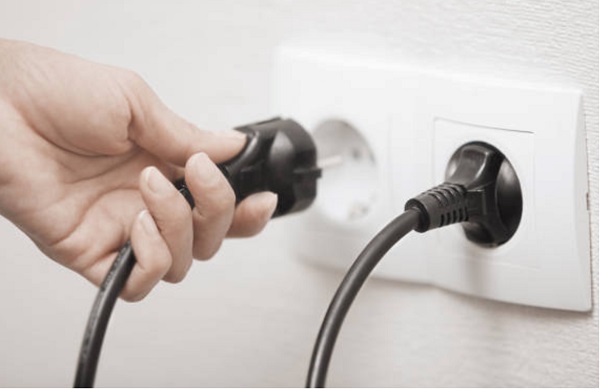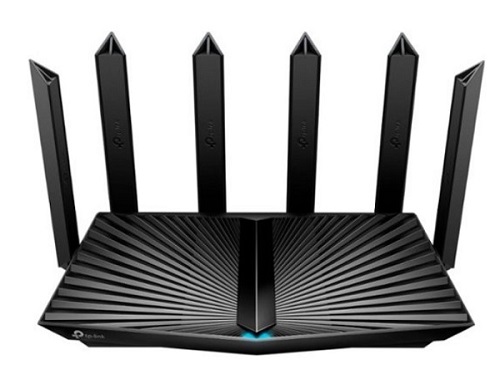Flashing red light on Hisense TVs are often an indication of error, whether from software or hardware, as it is with most TVs. The number of times the light blinks gives an indication of the specific error based on the blinking codes.

If your Hisense TV red light blinks 2 times, and you don’t know why that is happening and how to stop it, then you are not alone. For some users, this happened when they tried to turn on their TV or wake it up from standby mode. For other users, the red light blinked two times, paused and then blinked twice again while the TV was on.
In this guide, I am going to show you how to stop this error on your Hisense TV, whether it happened while already watching TV or just when you try to power it on. First, I will explain why this happens in both cases.
Without any further ado, let’s dive right in!
Why Hisense TV Red Light Blinks 2 Times
If your Hisense TV red light flashes 2 times when you try to power it on and there is no picture on the screen, then you most likely have a faulty backlight. This can be from bad LED backlight strips or faulty backlight inverter board, and is a common issue.
In fewer cases, the red light flashing with no picture can also be due to bad power supply board. It can also be a software issue causing the TV to be stuck in standby mode.
However, if your Hisense TV or Hisense Roku TV red light flashes 2 times, pauses and then repeats while the TV is on, then your TV is probably disconnected from your network connection and is looking for a network to connect to.
That said, let’s look at how to fix this issue in all cases.
How to Fix Hisense TV Red Light Blinking 2 Times
If your Hisense TV is blinking red light 2 times, you need to power cycle it. To do that, turn off your TV and unplug it from the power outlet. Leave it unplugged for 60 seconds. While unplugged, press the power button on the TV for 30 seconds. Now, plug the TV back and turn it on. The red blinking light should stop.
1. Power Cycle Your TV
I’ll let you in on a little secret – No matter what issue you have with your TV (as long as the set is still intact), always power cycle it first. You will be surprised at the number of issues a simple power cycling can fix on any TV.
If your TV is stuck in standby mode with 2 repeated flashes or there are other software related issues, this will help you fix it quickly and clear the error.

Could it end up being a more technical hardware issue? Definitely. However, until you do this, don’t try the next thing yet.
With that said, here’s how to power cycle your Hisense smart TV:
- Unplug your TV from power outlet
- Leave it unplugged for 60 seconds
- While unplugged, press the power button on your TV for 30 seconds (not the one on the remote)
- Plug the TV back into the power source and try to turn it on
If the red light stops flashing, good. Otherwise, move on to the next tip.
2. Check for Connection Issues
This only applies to you if your Hisense Vidaa OS or android OS smart TV is blinking 2 times while the TV is on and there’s picture, because you need that for this particular method. However, if your TV is not even showing any picture at all, just move to the next fix.
Now, let’s continue.
Your Hisense smart TV is likely disconnected from your network, probably because you restarted or unplugged your internet router, and your TV is failing to automatically connect back to the router.

So, go to your Hisense smart TV settings and reset the Wi-Fi connection. Once done, reconnect your TV back to your Wi-Fi and the red light should stop blinking.
3. Check for Defective Backlight
If your Hisense TV red light flashes twice with no picture on the screen, it is very likely due to a defective backlight based on Hisense blinking codes. Sometimes, you may see a dull blue screen (or any other dull color) on the screen instead of totally black screen.
In that case, you can do a flashlight test to check if the backlight is defective.
So, how do you check if the issue is with your TV backlight?
- First, make sure your TV is plugged into the power outlet and you have pressed the power button the normal way you get it to turn on
- In addition, make sure that you’ve done all the steps shown above (that way, you can be sure your TV did actually respond to the power signal).
- Next, point a flashlight to your TV screen (you can also move it around the screen),
If your TV backlight is working well, all you should see is the reflection of the flashlight. However, if you can see dull images on the screen while pointing the flashlight, then your TV backlight is defective.
You can watch the video below for a visual demonstration of the process.
A more accurate way to check for faulty backlight is to actually disassemble the TV and test the backlight strips. Here’s how to do that:
- Open up the TV and test the lamps in the panel. You can use a 3V power source (2 AA batteries) to test each lamp one at a time. Once you find faulty ones, replace them. This will take you more time since you have to test each lamp and replace faulty ones.
- While it’s much cheaper to replace individual LEDs, the issue may happen again since this could indicate a bad batch.
- Your best bet is to replace the entire LED strip which is not only easier but also a better solution.
Replacing faulty LED backlight strips or installing a new backlight inverter board will fix the issue 9 out of 10 times. However, considering the technicality of the process, the cost and other factors, your best bet might be to buy a new TV.
If it’s not coming from a faulty backlight, then it’s more than likely the power supply board.
4. Inspect the Power Supply Board
With backlight ruled out first (being the more common cause of this error), then next thing you need to check is the power supply board. Again, this applies if your Hisense TV won’t show any picture, and the red light keeps flashing.
Capacitors on the power supply board can receive a surge and then fail. Most times, you can detect faulty capacitors by visual inspection when you open up the panel.
If a capacitor is faulty, some of the signs you might see include:
- The capacitor is bulging at the top
- The capacitor is leaking
- Corrosive layer on one or both legs of the capacitor
- Bottom of the capacitor is pushed out
Once you see any of the above visible signs on the capacitor, then you need to remove and replace such capacitor.
NOTE: The capacitor may be faulty and not show any visual sign. Hence, the most accurate way to check in such case will be to use a multimeter to check the voltage, and compare it to the expected/labelled voltage of the capacitors. If you see a wrong voltage reading on the multimeter, then it is faulty even if there is no visual sign.
To remove the faulty capacitor:
- Carefully take note of the pin on the board that the capacitor is attached. You should do the removal with a soldering iron (do not force pull it out)
- With the heated soldering iron, carefully apply pressure from the back of the board on the pin for the faulty capacitor until it melts.
- Then, you can go ahead and remove it.
- Once you have gotten the new capacitors, replace the old faulty one you removed using a soldering iron.
While replacing the capacitor, you should know the following:
- The new capacitor must be placed in exactly the same direction as the old damaged one (this is why I advised taking some pictures of your board before removing anything earlier).
- Ideally, you should replace the capacitor with a new one that matches the ratings (Voltage, Temperature and Micro farads). In case where you can’t get the exact value for the 3 ratings, you can get one that has voltage and temperature that is higher that that of the old capacitor but not lower. The micro farad can also be slightly higher, but not lower.
Once you replace the faulty capacitors, turn on your TV and the red blinking light should stop. Again, you may want to consider the option of just getting a good replacement.
5. Contact Hisense Support
If any of the steps above is too technical for you (especially if you still have warranty), go ahead and contact Hisense support for fix.
Alternative, you can get it fixed at any good repair shop.
If you found this content helpful, kindly use the comment section below. Also, let me know which of these methods fixed the issue for you.

I replaced bad capacitors and the tv was working amazingly! I went back to work and the tv went into sleep mode. Now it is completely black. The red light blinks once slowly and then again. I can’t see anything on the screen with a flashlight and I’ve tried the other options you have listed. What else do you think I should try? I’m poor
Lol.
Also, you probably shouldn’t tell people to contact Hisense because they are absolutely no help. And they lie and dont care at all that so many people have gone through this
Oh, sorry to hear about that Jessica.
Was it the power board that had the faulty capacitors that you replaced? If yes, you should try replacing the whole board instead.
Since replacing the faulty capacitors fixed it initially, that indicates where the issue is coming from. Also, the black screen issue does sound like a power board issue.
I will never own another hisense TV. I bought 2 55 inch at the same time. They both went out 3 months apart. They are trash
I have a question about a Hisense LED LCD TV model number 58rge it has power to it but it blinks two times red but I have no screen it’s just black
Great detail to all issues thank you
Thank you bro! This helps a little. I have a rare problem, where the Hisense tv turns on occasionally, will work for a few days then go back to blinking red with no picture. Any idea with what that would be?
Thank you that was very helpful
Glad you found it helpful.
Hisense Tv are trash